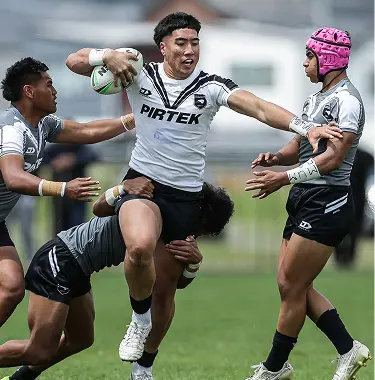
Concussion
A concussion is a mild traumatic brain injury (TBI) caused by a direct strike to the head or a blow to the body. You don’t have to lose consciousness or be hit on the head directly to be concussed.
WHAT IS A CONCUSSION?
A concussion is a brain injury that damages and stretches the brain cells, which causes them to release chemicals affecting how the brain works. This also makes the brain more sensitive to increased injury. All individuals involved in rugby league must be well-informed to recognise the signs of a concussion and know the appropriate actions to take when a player has suffered one.
HOW TO SPOT A CONCUSSION
Here are the signs and symptoms to look out for when you suspect a player has been concussed.
If a player presents with any of these Red Flag symptoms, they must seek urgent medical attention:
- Loss of consciousness or delayed responsiveness
- Double or Blurred vision
- Neck pain
- Nausea or vomiting
- Balance problems or dizziness
- Sensitivity to noise
- Concentration or memory problems
- Seizure or convulsion
- Unusual behaviour changes
WHAT YOU SHOULD DO?
If a player has a suspected concussion at training or during match activities, then:
- The player MUST be immediately removed from the activity and MUST NOT return.
- The player MUST NOT be left alone.
- The player MUST NOT drive a vehicle
- The player MUST always be in the care of a responsible adult informed of the player’s suspected concussion.
- The player should be medically assessed as soon as possible.
- The player MUST stand down for 21 days, with NO exceptions, unless medically cleared.
21 Days Minimum Stand DOwn
It is essential that during the first few days after a concussion has occurred, the player has completed physical AND cognitive (mental) rest. The player should avoid all activities that require concentration or attention. This includes watching television, using computers, using your cell phone, reading or driving. Failure to do this may worsen symptoms, resulting in a delay in full recovery.

.webp)


.jpg)